It’s hard to believe we’re already approaching the end of the year. As the holidays grow near and thoughts turn to charitable giving, not everyone realizes there are ways to give more strategically. With a bit of planning, year-end generosity can do more than support a worthy cause—it can also create meaningful financial benefits for you and your family when coordinated with your broader financial plan. Below are seven practical ways to make the most of your generosity before December 31.
1. ) Review What You’ve Given So Far This Year
Before making additional donations, take stock of what you’ve already contributed and how those gifts were made. Were they mostly cash donations, or did you give other types of assets? Reviewing your current-year contributions can help you identify new opportunities before December 31st and ensure your giving aligns with your overall financial goals.
2. ) Donating Appreciated Investments or Other Long-Term Assets
If you own investments or property that have grown in value, donating them directly to a qualified charity can sometimes be more tax-efficient than giving cash. This applies to long-term appreciated assets—those you’ve held for more than one year—such as:
Publicly traded stocks or ETFs
Mutual fund shares
Bonds or other securities
Privately held business interests or restricted stock (in some cases)
Real estate or land
When these assets are donated directly to a qualified public charity, you may be able to:
Avoid paying capital gains tax on the appreciation.
Deduct the fair market value of the asset if you itemize, subject to IRS income limits based on your adjusted gross income (AGI) and other eligibility rules.
This approach can be especially beneficial if you’ve experienced strong investment growth, hold a concentrated stock position, or want to make a larger charitable impact without reducing cash flow.
However, it’s important to note that these tax advantages apply only when donations are made to qualified charitable organizations—not to family members or individuals.
3. ) What About Gifting to Family?
Giving appreciated assets to loved ones can be a meaningful gesture, but it doesn’t carry the same tax benefits as donating to a charity. For example:
No charitable deduction: Gifts to individuals aren’t tax-deductible.
Transferred cost basis: The recipient assumes your original cost basis and holding period, meaning if they sell later, they’ll owe capital gains tax on the appreciation since the time you purchased the asset.
Gift tax reporting: If the value of a gift to any individual exceeds the annual exclusion amount of $19,000 per recipient in 2025, a gift tax return may be required. (Married couples can effectively give up to $38,000 jointly without triggering the filing requirement.)
Family gifting can still be a powerful part of your overall wealth-transfer plan—but it serves a different purpose than charitable giving. A financial planner can help you coordinate both strategies to align with your long-term goals.
4. ) Giving Through a Family Foundation or Donor-Advised Fund
For families who want to give back while staying involved in how their contributions are used, establishing a family foundation or donor-advised fund (DAF) can provide a structured, long-term approach.
These charitable vehicles allow you to contribute appreciated assets directly to the foundation or fund and may provide similar tax advantages to donating to a public charity, such as:
Potential deduction of the fair market value if you itemize.
Avoidance of capital gains tax on the appreciation.
The ability to recommend future grants to qualified charities over time.
A private family foundation offers the most control but comes with significant setup, compliance, and ongoing administrative requirements. A donor-advised fund—typically sponsored by a community foundation or financial institution—can provide a simpler, lower-cost way to involve your family in philanthropy while maintaining flexibility. Because each option carries unique rules and responsibilities, it’s best to review them with your financial planner, tax advisor, or estate attorney before taking action.
5. ) Explore Strategic Timing Options
The timing of your gift can affect your potential tax benefit.
Bunching contributions: If your total itemized deductions (including charitable gifts, mortgage interest, and state taxes) are close to the standard deduction limit, combining two or more years of donations into one year can help you exceed that threshold. (Bunching only makes sense if your combined charitable and other itemized deductions in the “bunching year” exceed the standard deduction by a comfortable margin.) This strategy allows you to itemize deductions and lower taxable income, rather than taking the standard deduction. In short, bunching enhances the tax benefit of your giving by concentrating donations into years when they can make a bigger impact on your overall tax picture.
End-of-year deadlines: Contributions must generally be completed by December 31st to qualify for that tax year’s deduction.
Forward planning: You can still plan next year’s donations now—setting up recurring gifts or exploring structured giving accounts that allow flexibility in timing.
The goal isn’t to rush—it’s to give in a way that aligns with your broader tax and cash-flow strategy.
6. ) Coordinate with Retirement and Tax Planning
Charitable giving can also tie directly into retirement income and required distributions.
Qualified charitable distributions (QCDs): If you’re age 70½ or older, you may be able to direct up to $108,000 per year (indexed for inflation 2025) from an IRA directly to a qualified charity. This type of transfer can satisfy your required minimum distribution (RMD) while excluding that amount from your taxable income. The benefit is twofold: you still meet the IRS’s annual withdrawal requirement, but because the funds go straight to the charity, the amount doesn’t increase your adjusted gross income (AGI). This can help keep your overall tax liability lower—and may even prevent other tax thresholds (such as higher Medicare premiums or Social Security taxation) from being triggered.
Example: If your RMD is $30,000 and you use $10,000 of it for a qualified charitable distribution, only the remaining $20,000 is included in your taxable income. You’ve met your full distribution requirement, supported a cause you care about, and reduced the portion of your retirement income that’s subject to tax.
Tax-efficient withdrawals: If you’re not using a QCD, it still helps to think about which accounts you give from. Using cash or after-tax investment accounts for donations can help preserve tax-deferred assets—such as IRAs or 401(k)s—for continued growth. In some cases, coordinating the timing of charitable gifts with other withdrawals can also help manage taxable income for the year. A financial planner can help you compare scenarios to determine which accounts—and timing—create the most efficient outcome for your goals.
7. ) Keep Documentation and Follow Up
Save written acknowledgments from charities for all contributions—especially those over $250.
If you’re donating non-cash assets (such as securities or property), ensure valuations are properly documented for IRS purposes.
Consider revisiting your list of charitable organizations each year to confirm they’re still active and aligned with your values.
Thoughtful charitable giving can be both generous and strategic when it’s integrated into your broader financial plan. Whether you’re donating appreciated assets, using retirement distributions, or coordinating the timing of your gifts for maximum tax efficiency, each approach can help you make a more meaningful impact.
If you’re considering charitable gifts before January 1, our team can help you review your options and understand how these strategies fit within your overall plan. Contact Aspire Planning Associates to schedule a personalized consultation and give with confidence this season.



